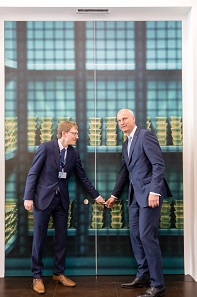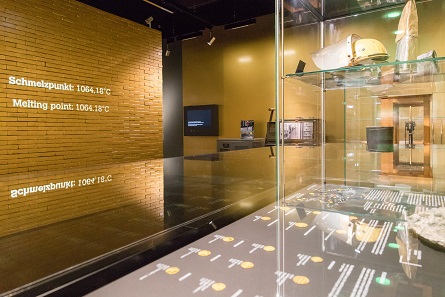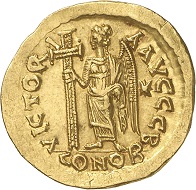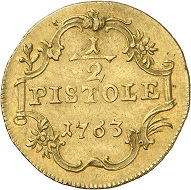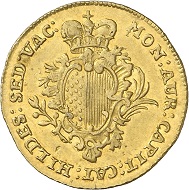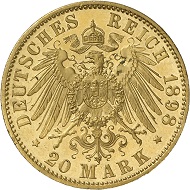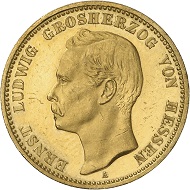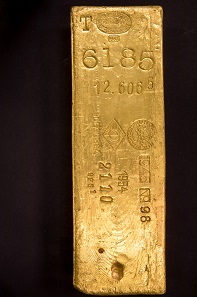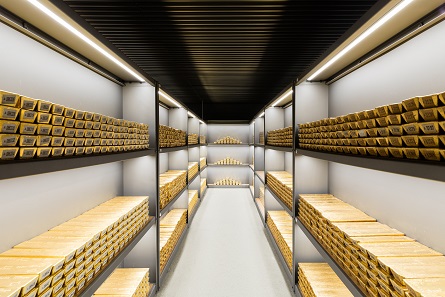April 26, 2018 – From April 11th to September 30th 2018, the Money Museum of the Deutsche Bundesbank will be hosting a special exhibition entitled “Gold. Treasures at the Deutsche Bundesbank”.
Impression from the exhibition of the Money Museum of the Deutsche Bundesbank. Photo: Nils Thies.
For around two-and-a-half thousand years, gold coins were an important part of the monetary systems of nearly all states, and gold continues to play an important role as a reserve asset to this today. Weighing in at 3,374 tons, Germany’s gold reserves are the second largest worldwide, after those of the United States. The Bundesbank is responsible for managing these treasures, and this special exhibition is the first time a selection of the most remarkable gold bars will be put on display to the general public. Among them is one of the oldest bars held as part of Germany’s reserve assets, which was cast in 1917 and delivered to the Bundesbank’s predecessor – the Bank deutscher Länder – by the Federal Reserve Bank in 1956. A combination of exhibits and extensive information materials invites visitors to learn how monetary and foreign exchange policy have evolved over time.
A Venetian Ducat from the Bundesbank collection. Photo: Deutsche Bundesbank, Numismatische Sammlung
The numismatic part of the exhibition is centred around a range of particularly important and long-lived historical gold coins from the Bundesbank’s very own numismatic collection. One highlight for visitors is the longest-lived coin in the world – the ducat – which was introduced in 1284 and is still being minted to this day. Coins such as these did much to shape the international world of payments in their day and played a prominent role in monetary and foreign exchange policy. In many cases, they influenced coin minting in other countries.
Enjoy the following pictures to get an impression from the exhibition and the Bundesbank gold reserves.
Carl-Ludwig Thiele (Executive Board) speaks during the opening of the special exhibition. Photo: Nils Thies.
Carl-Ludwig Thiele (right) opens with Alexander Ruske (Numismatist of the Bundesbank, left) on April 10th 2018 the door to the exhibition. Photo: Nils Thies.
Gold bars in a vault of the Deutsche Bundesbank on 21 June 2017. Photo: Nils Thies.
Impression from the special exhibition of the Money Museum of the Deutsche Bundesbank. Photo: Nils Thies.
A solidus of Basiliskos from the Bundesbank Collection. Photo: Deutsche Bundesbank, Numismatische Sammlung.
A half pistol of 1763 from the Bundesbank Collection. Photo: Deutsche Bundesbank, Numismatische Sammlung.
Impression from the special exhibition of the Money Museum of the Deutsche Bundesbank. Photo: Nils Thies.
A 20 Mark 1898 of Ernst Ludwig Großherzog von Hessen from the Bundesbank Collection. Photo: Deutsche Bundesbank, Numismatische Sammlung.
Impression from the special exhibition of the Money Museum of the Deutsche Bundesbank. Photo: Nils Thies.
Gold bar No. 3 from 1937, one of the oldest specimens in the property of the Deutsche Bundesbank. Photo: Nils Thies.
A Valcambi gold bar made in 2014. Photo: Deutsche Bundesbank, Nils Thies.
Gold bars in a vault of the Deutsche Bundesbank on 21 June 2017. Photo: Nils Thies.
Carl-Ludwig Thiele, Hendrik Mäkeler, Roland Zils and Wolfgang Schulte (left to right) during the presentation of the exhibition catalogue. Photo: Nils Thies.
The exhibition can be viewed during the Money Museum’s opening hours. Admission is free.
For further information visit the website of the Money Museum of the Deutsche Bundesbank.
Frankfurt, the Bundesbank’s home city, is one of Germany’s most important numismatic centers, as this article shows.
How the German gold reserves actually work is explained in this video.









